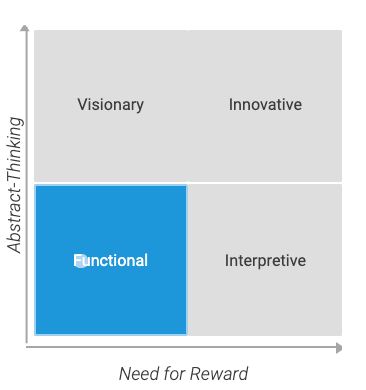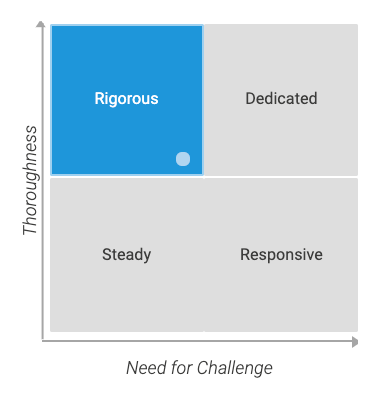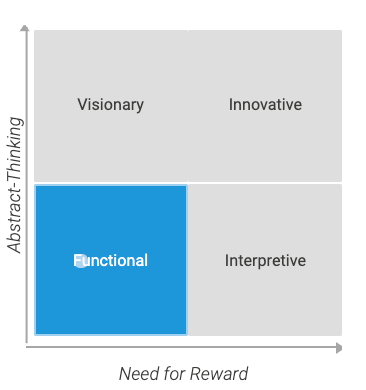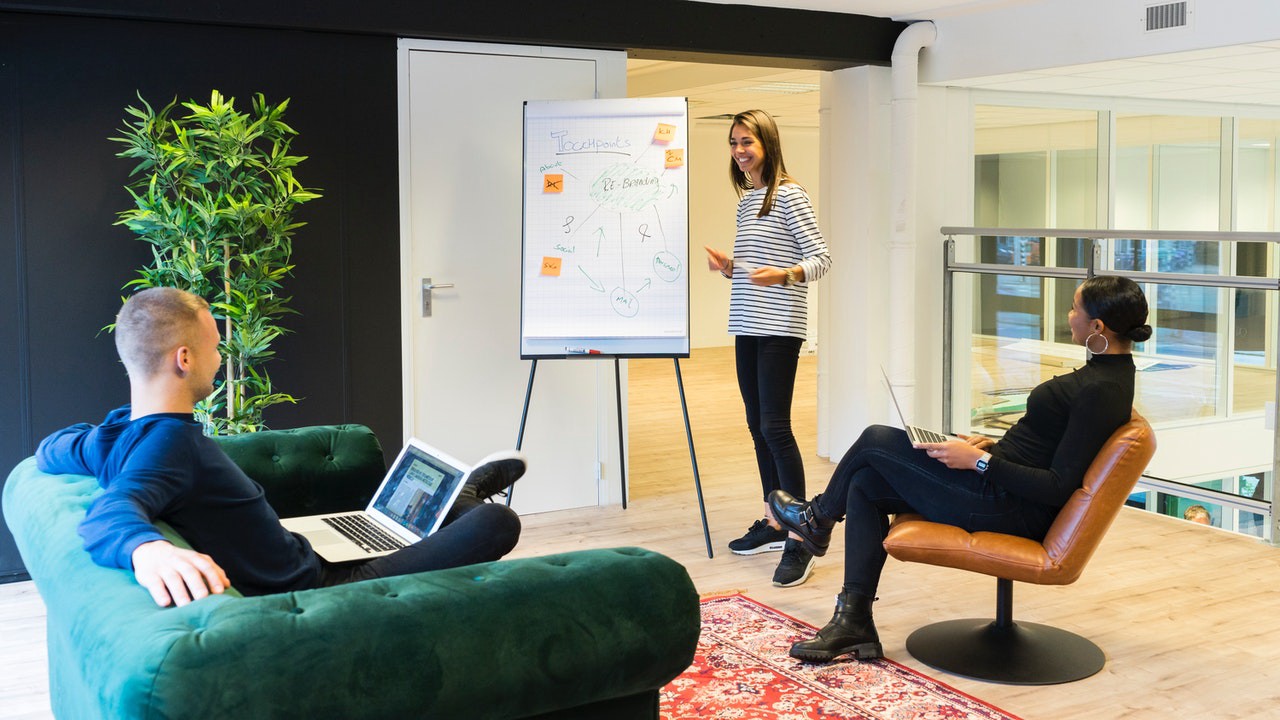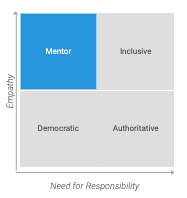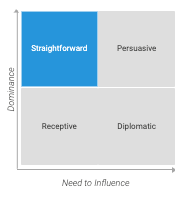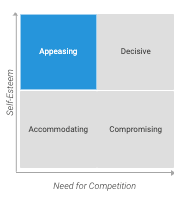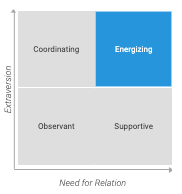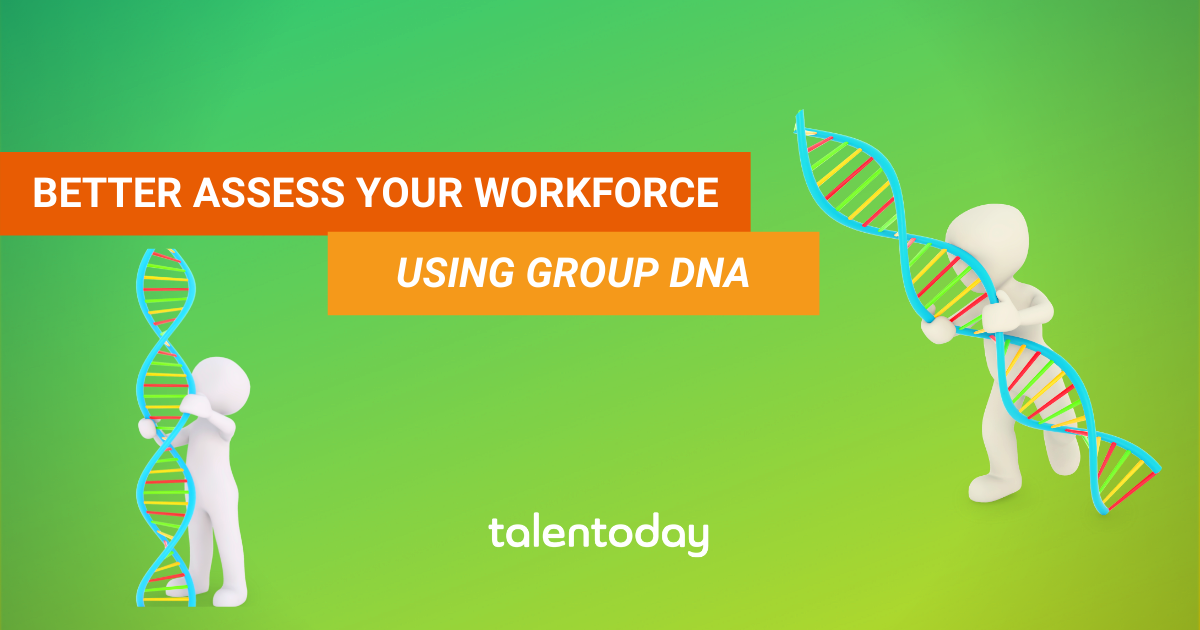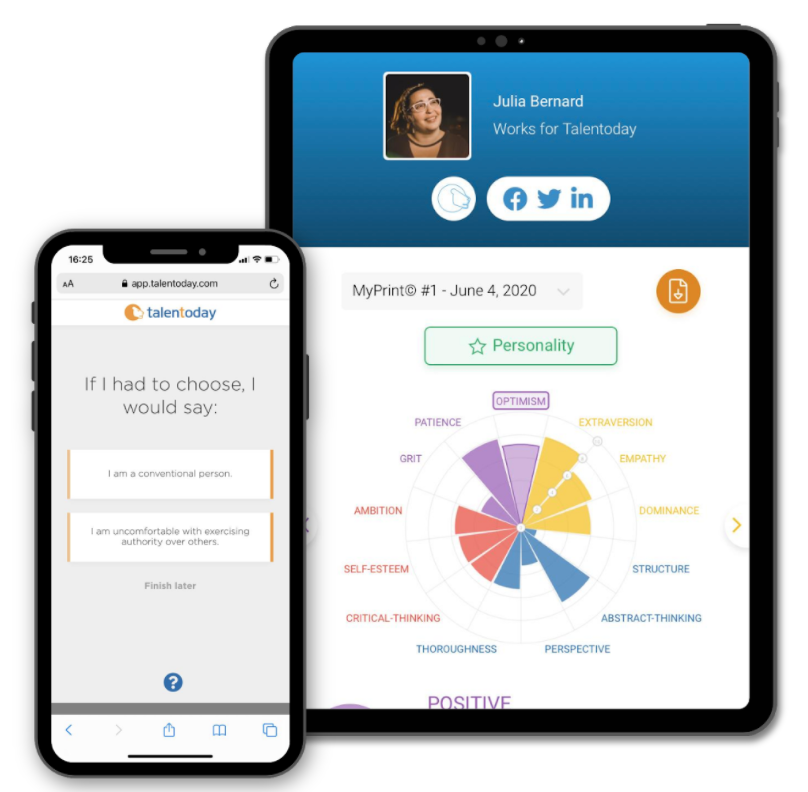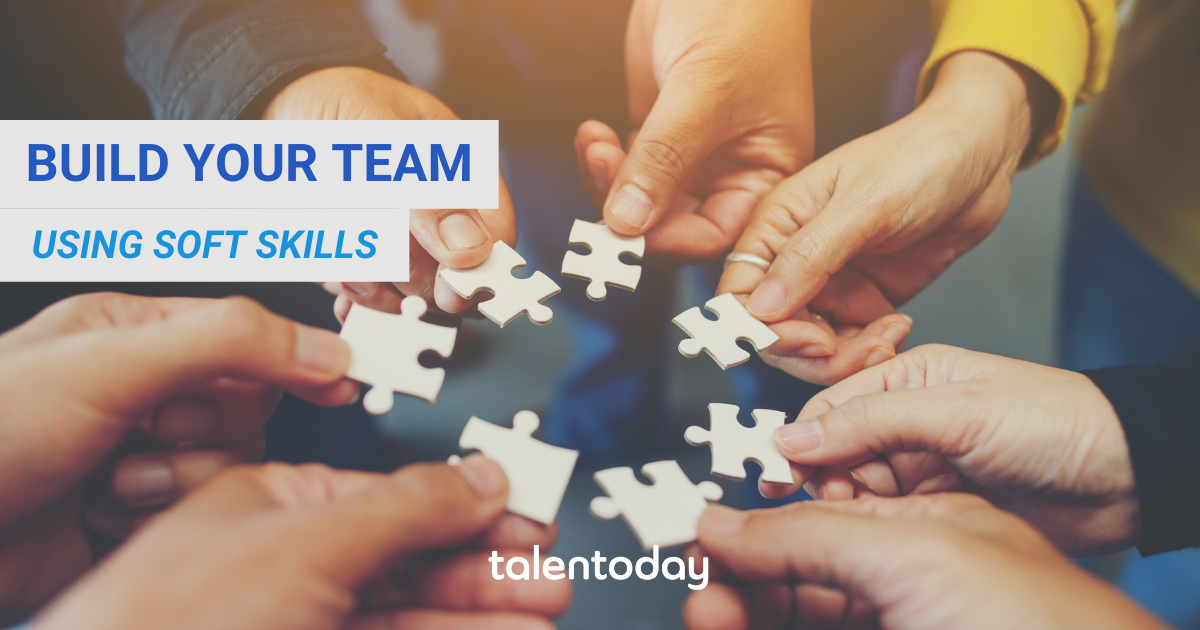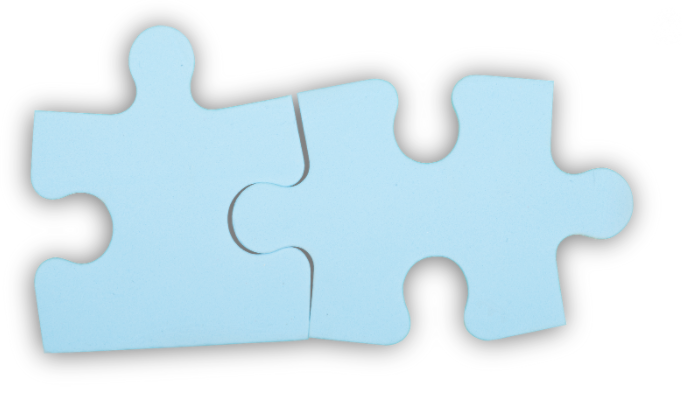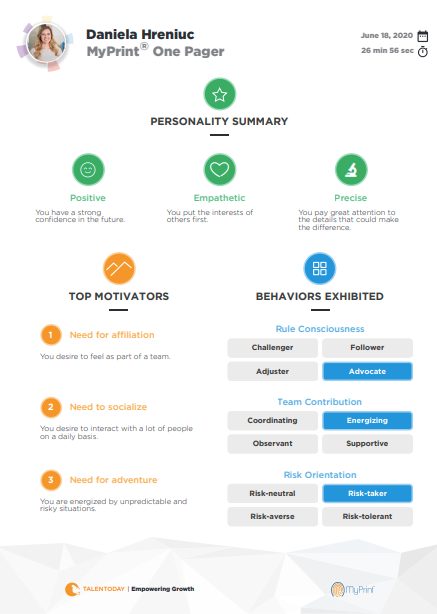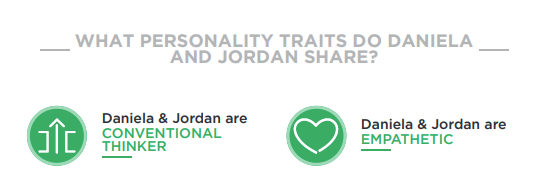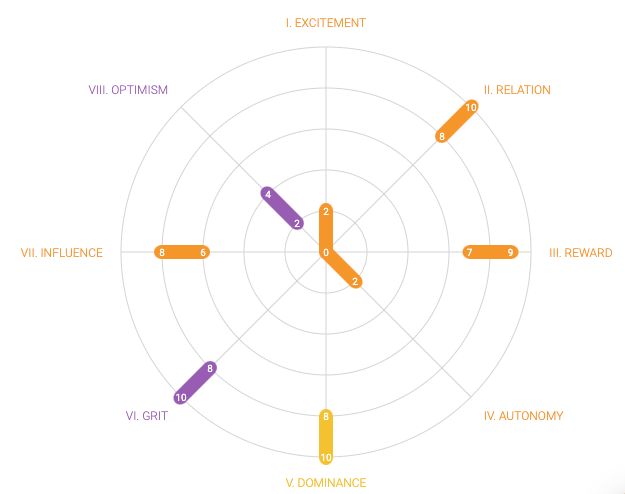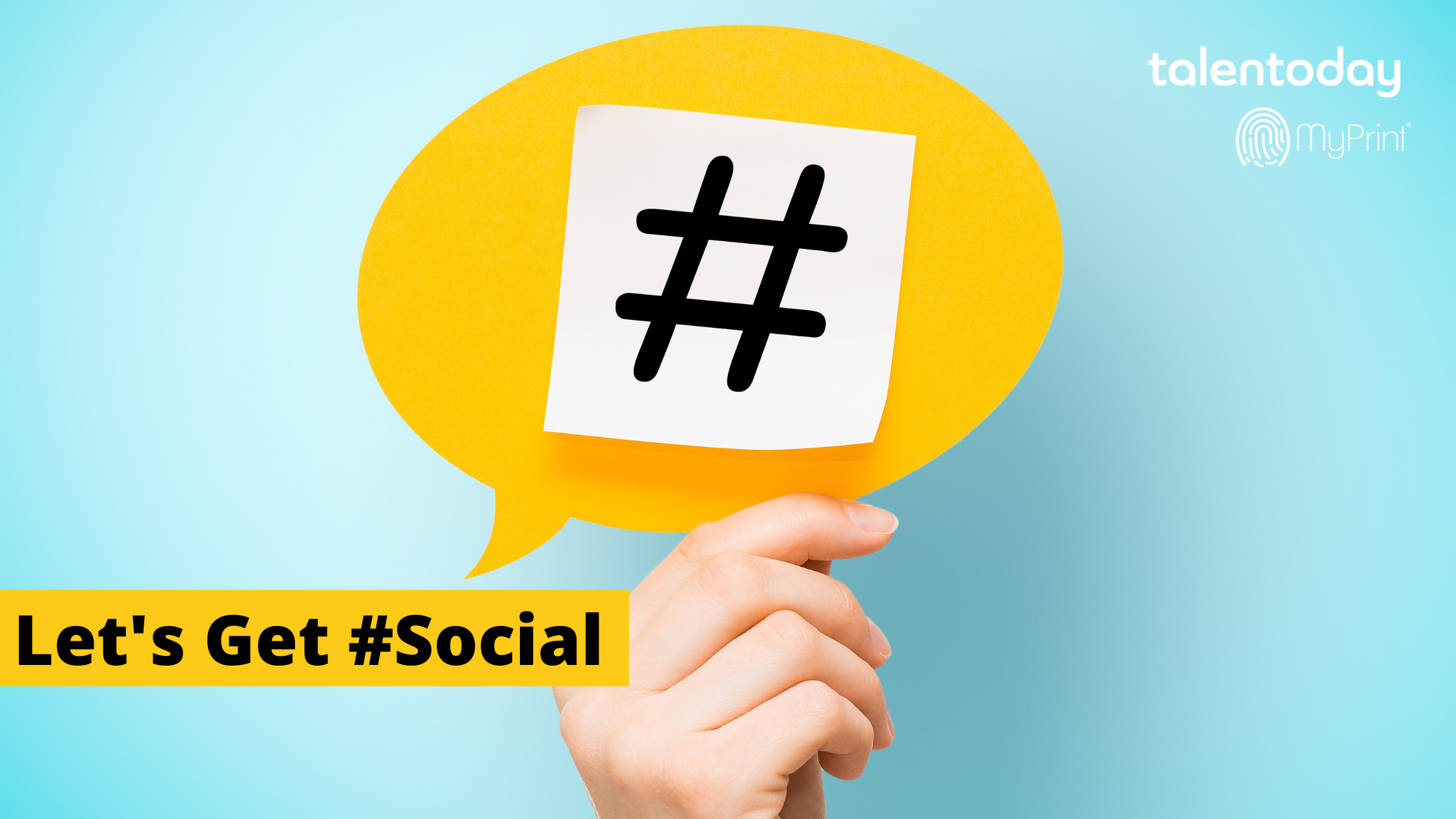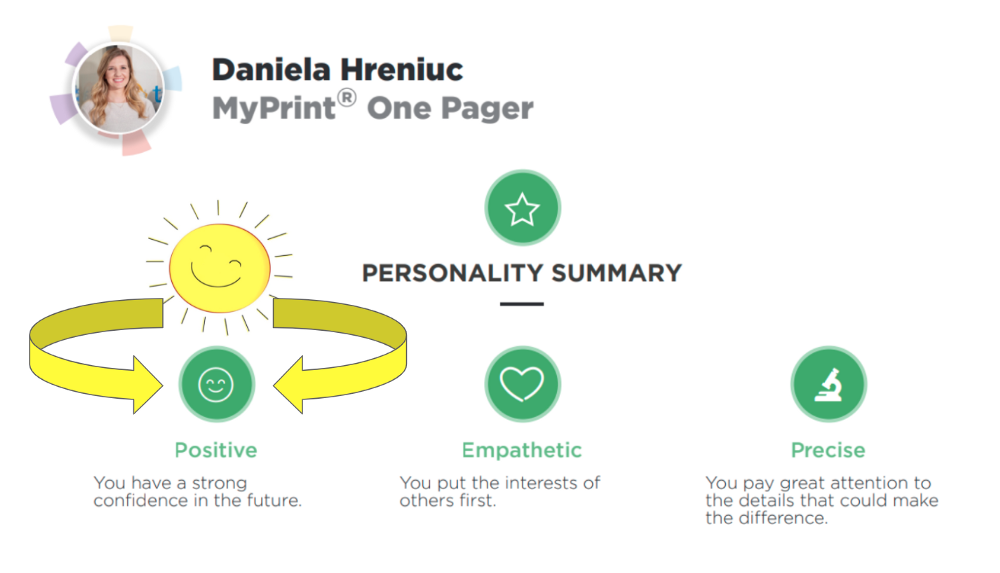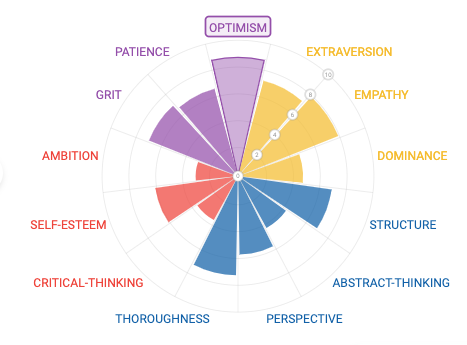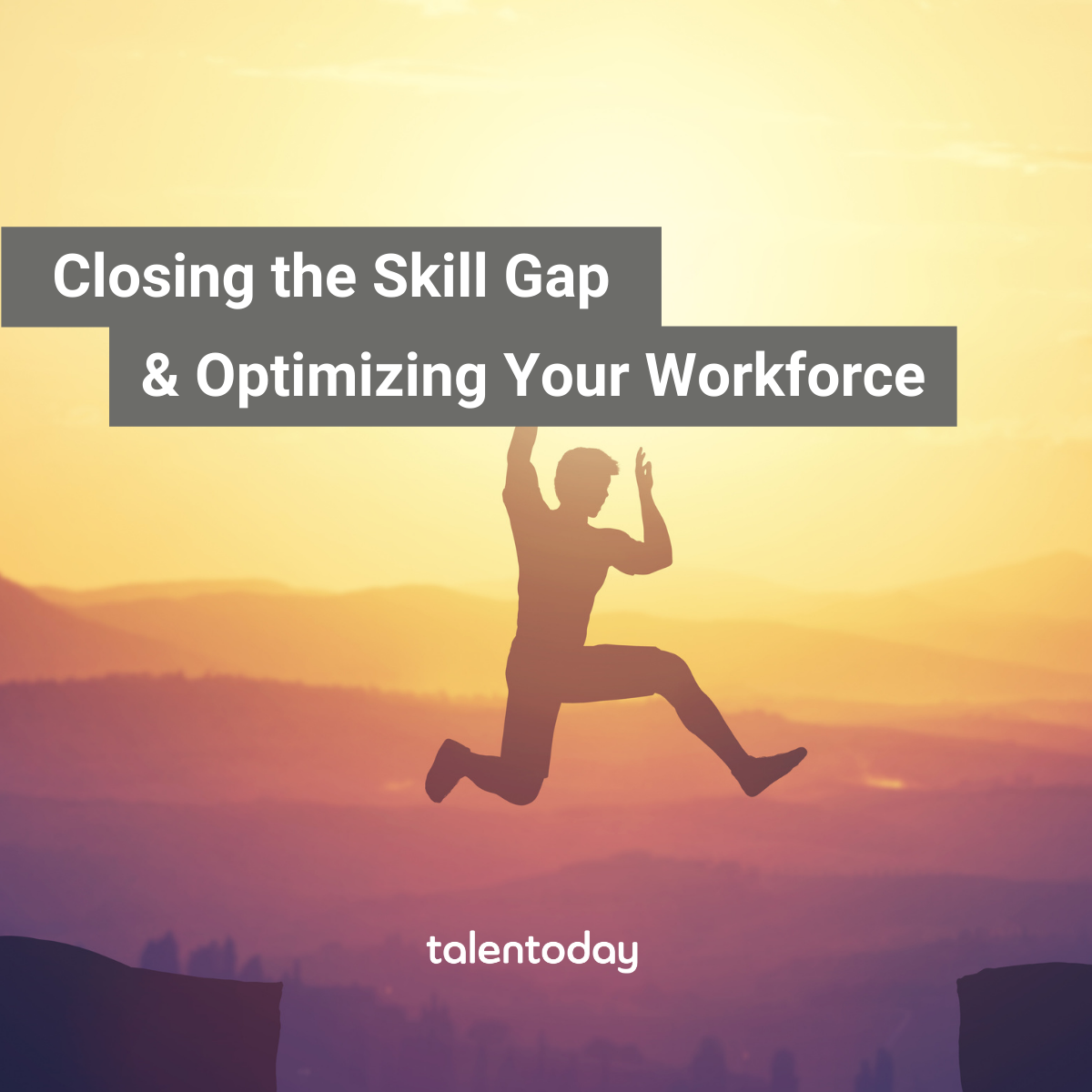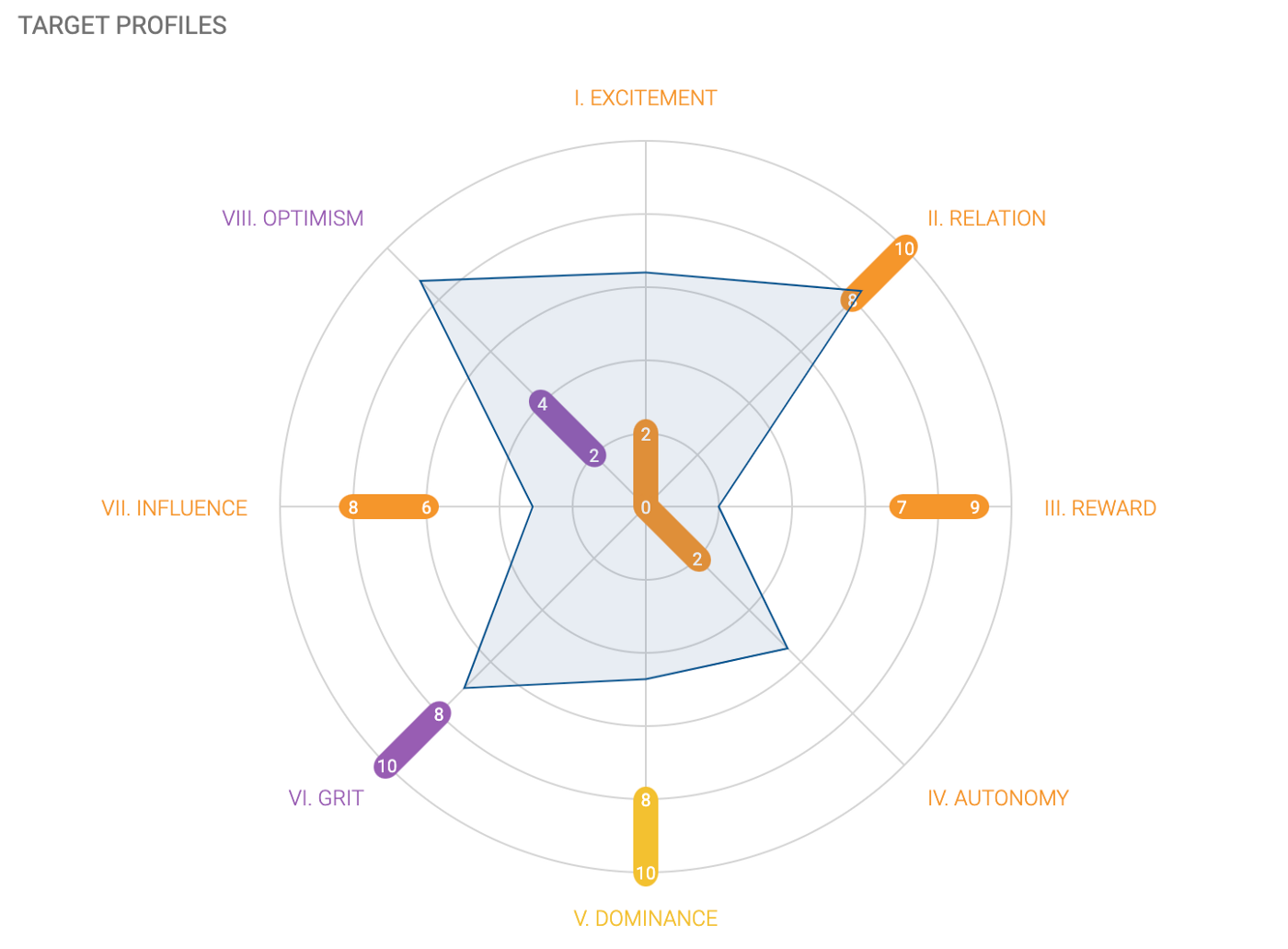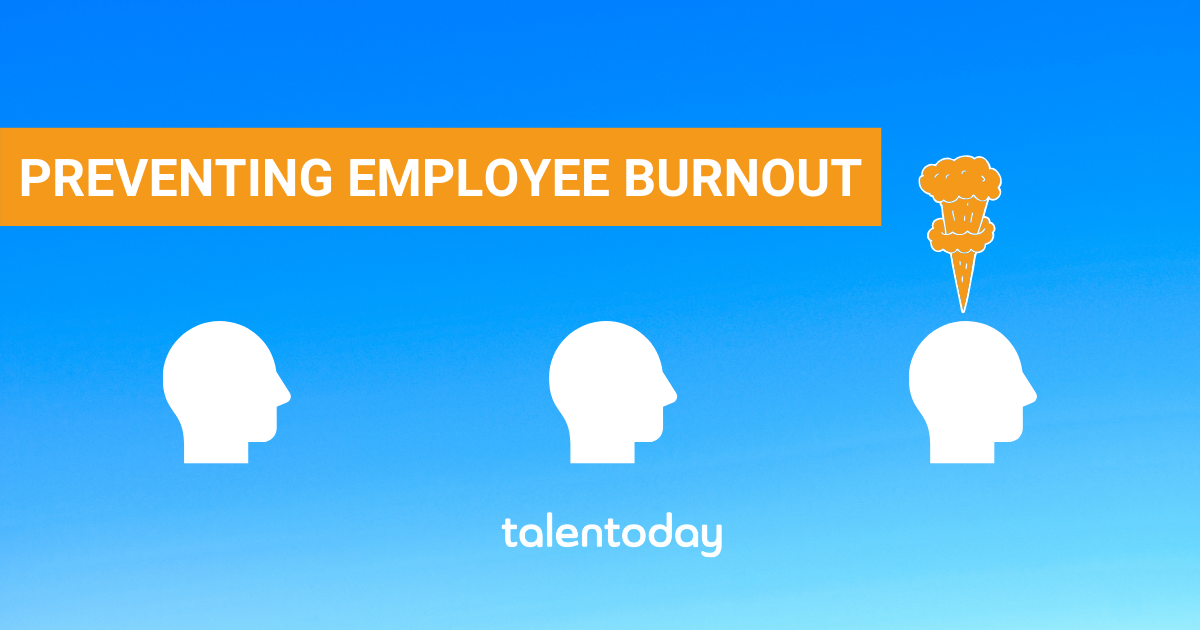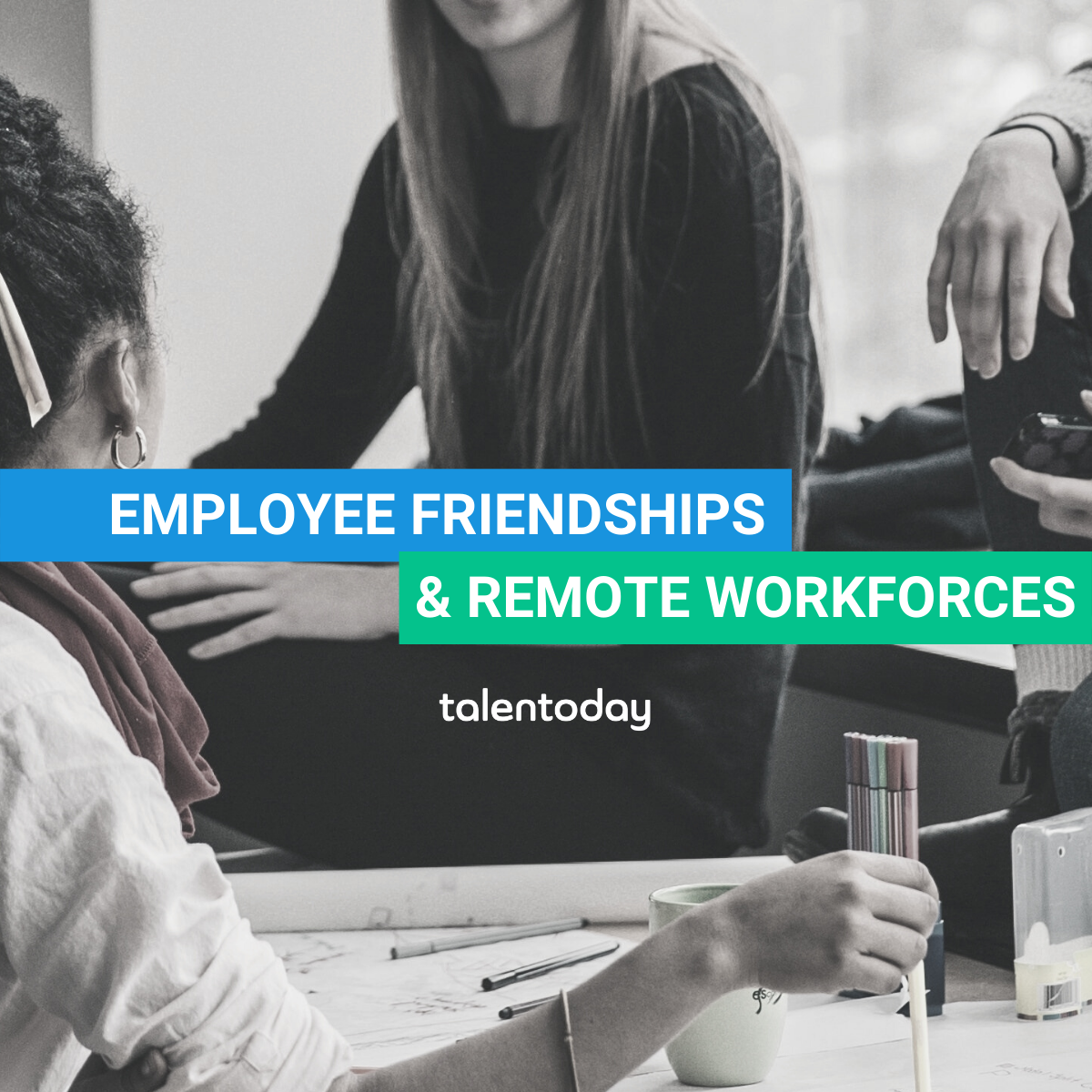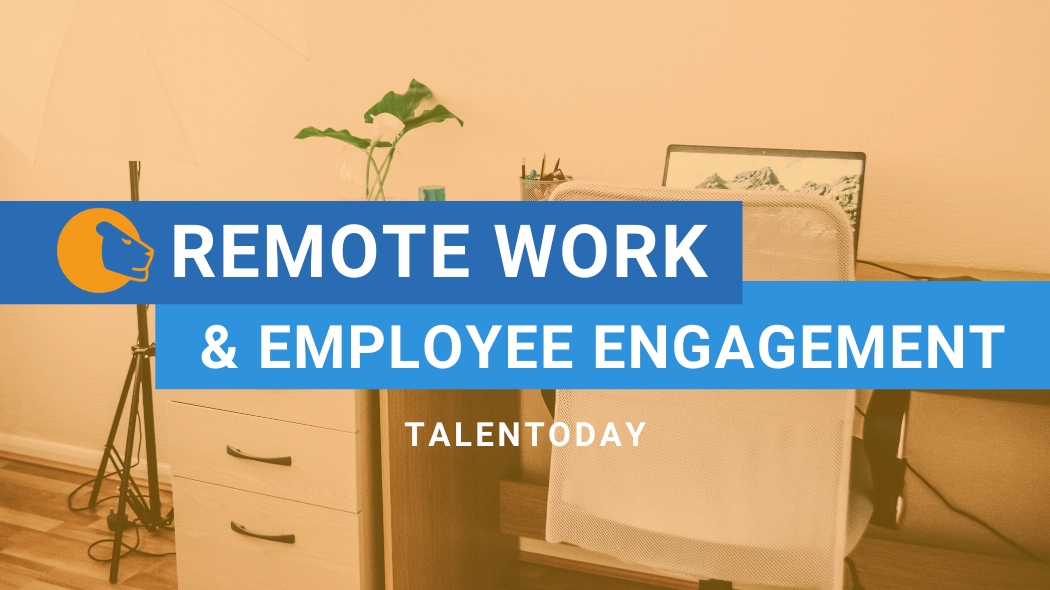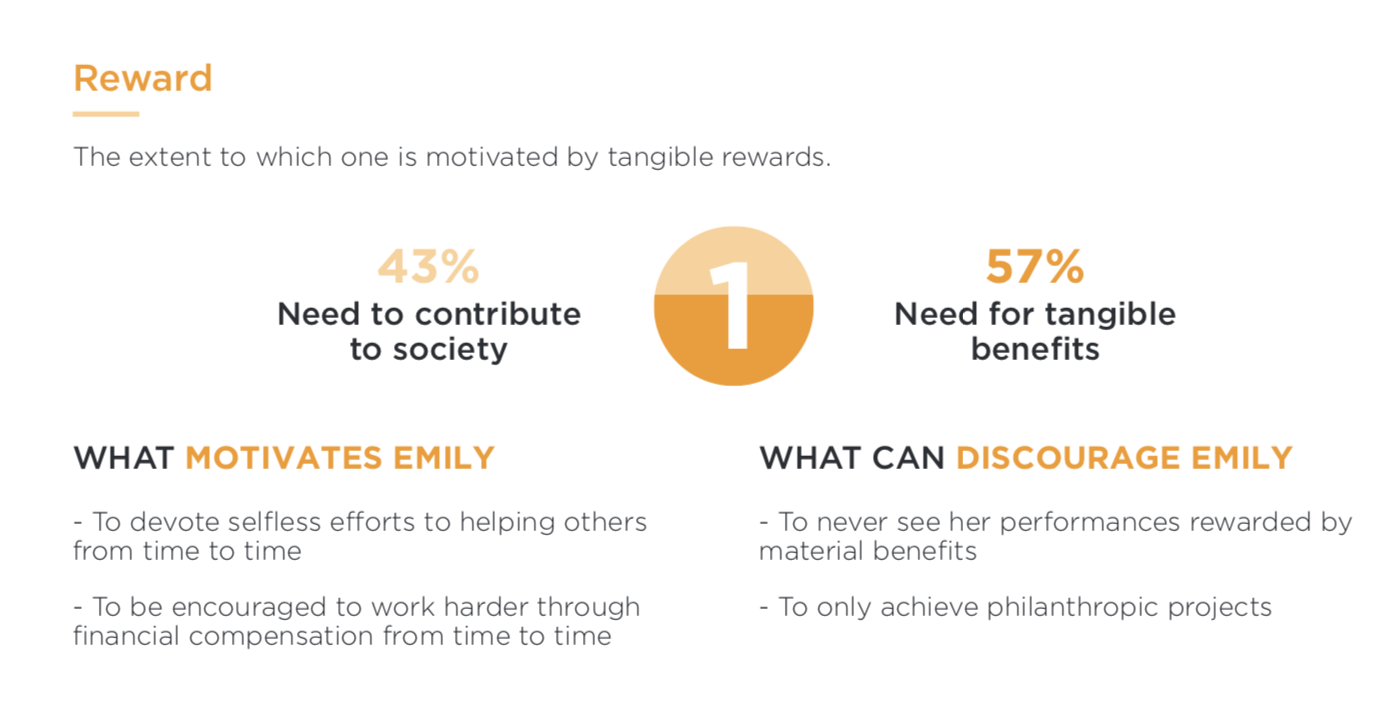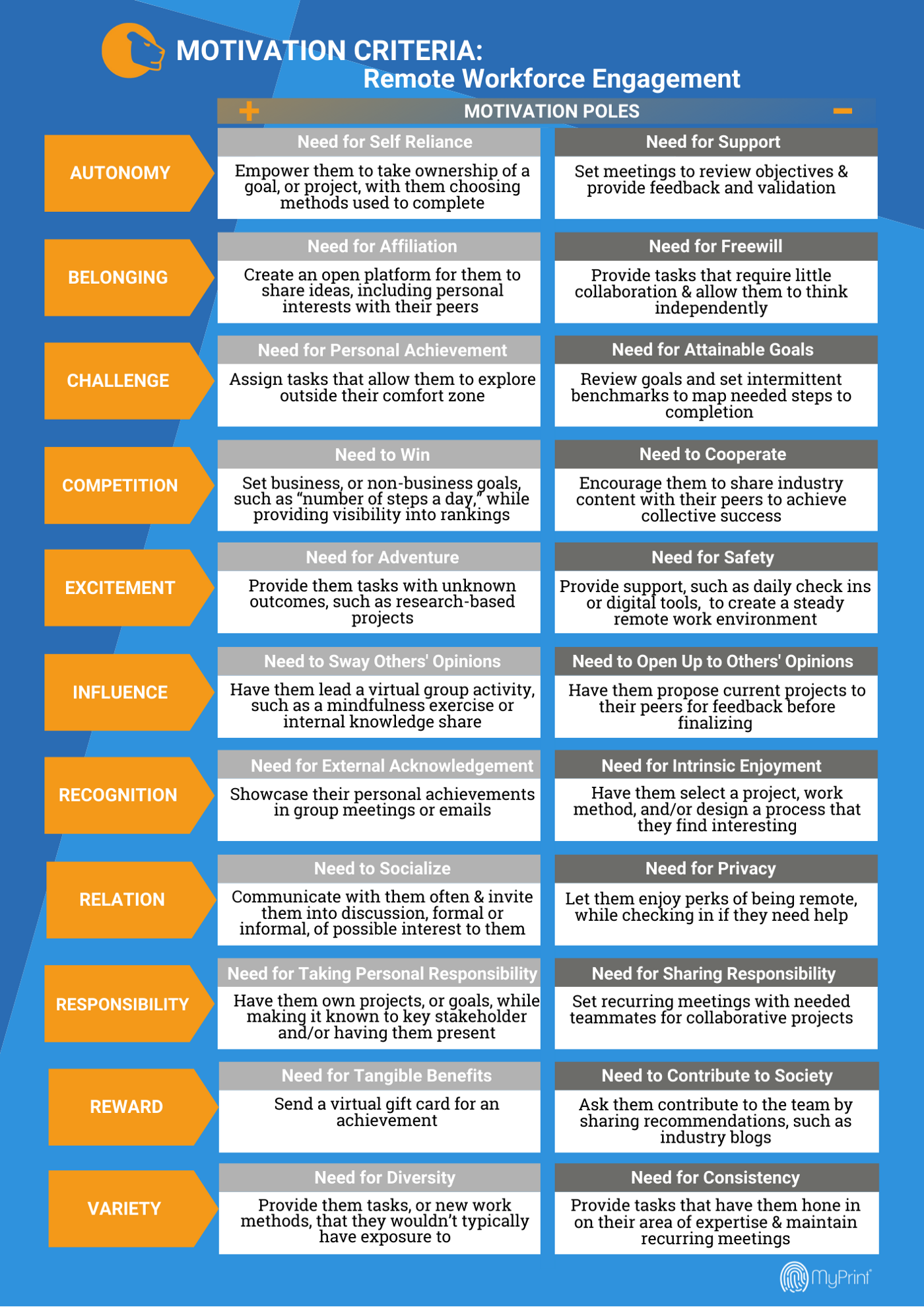Behaviors Uncovered: Creativity, Work and Learning Styles
In the first entry in our Behaviors Uncovered series, we investigated four key dimensions for employers focusing on better understanding group dynamics within their teams: Leadership Style, Communication Style, Conflict Management and Team Contribution. In part two, our attention turns to the behavior patterns that shape the ways individuals expand their knowledge base and work together to invent in the workplace: Creativity, Work and Learning Styles.
As a recap, behaviors represent the ranges of observable actions made by individuals in conjunction with their environment. The Talentoday MyPrint® questionnaire provides 11 behavioral dimensions displayed as score matrices resulting from the combination of personality and motivations dimensions of the assessment. Therefore, our behavioral styles are predicted based on the scores (high or low) that an individual has obtained on these two dimensions crossed together. In short, these analytical grids give insights for understanding why an individual tends to foster a particular pattern of actions and how they maintain it.
Creativity Style
Time and time again, creativity is cited as the skill most sought after by employers. After the ways we work were upended due to COVID-19, is it any wonder that companies are looking for ways to boost their knack for finding novel solutions to problems?
How, exactly, you define creativity is key when uncovering the science behind the behaviors in this area. Creativity Style can be described as the set of processes that an individual takes to produce something that is new and somehow valuable, whether it is intangible or concrete.
There are four styles of creativity, derived from the “Abstract Thinking” dimension of personality and the “Need for Reward” dimension of motivation:
- Visionary (Imaginative, Need to Contribute to Society): Individuals who have a Visionary creativity style are imaginative and aim for groundbreaking changes that will contribute to the improvement and betterment of others.
- Innovative (Imaginative, Need for Tangible Benefits): Individuals who have an Innovate creativity style like to think outside of the box, and aim to develop new and profitable processes or technologies.
- Functional (Practical, Need to Contribute to Society): Individuals who have a Functional creativity style are realistic, and their creative actions might take place in everyday activities, such as by using existing tools or methods in new and original ways.
- Interpretive (Practical, Need for Tangible Benefits): Individuals who have an Interpretive creativity style are typically looking for quick solutions, and usually come up with more advanced and profitable interpretations of existing techniques or devices.
Work Style
Whether a job requires multiple simple tasks or challenging projects will strongly influence the type of person that you want to work in certain roles. By taking the time to learn about what work style a person uses, you can help to assign roles on certain projects or keep it in mind when hiring for different roles. Work Style refers to the way in which an individual tackles their tasks and projects, as well as the pace at which they complete them.
There are four styles of communication, derived from the combination of the “Thoroughness” dimension of personality and the “Need for Challenge” dimension of motivation:
- Rigorous (Precise, Need for Attainable Goals): Individuals who have a Rigorous work style are thorough and task-oriented, and ensure high quality and error free work.
- Dedicated (Precise, Need for Personal Achievement): Individuals who have a Dedicated work style like to work on challenging projects and provide high quality work.
- Steady (Easy-Going, Need for Attainable Goals): Individuals who have a Steady work style value realistic goals and deadlines, and favor consistent productivity by focusing on bottom-line results.
- Responsive (Easy-Going, Need for Personal Achievement): Individuals who have a Responsive work style like challenging goals, and favor multi-tasking in order to do a higher quantity of work in a shorter amount of time.
Learning Style
It’s clear that uncovering the science behind behaviors in areas like learning style will play an integral role in the future of work. In fact, recent reporting indicates that companies are transitioning from hiring based on existing education to focus on skills-based hiring. For this expansion of upskilling efforts to work, employers must first learn how to tap into an individual’s preferred learning style
For our purposes, Learning Style can be summarized as the set of processes that an individual uses to acquire or develop skills or knowledge..
There are four styles of communication, derived from the combination of the “Structure” dimension of personality and the “Need for Recognition” dimension of motivation:
- Studious (Orderly, Need for Intrinsic Enjoyment): Individuals who are Studious learners like to learn things that they find interesting, and prefer learning through methods that allow time to reflect and go at their own pace, such as reading books or articles.
- Sequential (Orderly, Need for External Acknowledgment): Individuals who are Sequential learners are structured and learn best in a lesson format, with clear goals and positive feedback validating their progress.
- Conceptual (Spontaneous, Need for Intrinsic Enjoyment): Individuals who are Conceptual learners like to learn things for fun and do not need structure, but rather will feel like they’ve mastered a topic once they know its full context.
- Experimental (Spontaneous, Need for External Acknowledgment): Individuals who are Experimental learners tend to be intuitive and learn best through group interactions, where they seek positive feedback while testing their new knowledge or skills on others.
As the workplace evolves, employers are putting higher premiums on hiring individuals with the capacity to grow and find new ways to solve problems in their given roles. Understanding the behaviors behind creativity, work and learning styles is an important first step towards building an adaptable team ready to take on the future of work.
In the final entry of our three-part Behaviors Uncovered series, we investigate four areas of behavior that get to the heart of the ways individuals calculate their responses to high pressure situations — Rule Consciousness, Decision Making, Risk Orientation and Change Reaction.
Interested in uncovering more about how behavior profiles can help you understand how someone will act in a professional setting? Discover the science behind MyPrint by clicking here.
Behaviors Uncovered: Leadership, Communication, Conflict Management and Team Contribution
How can employers understand how someone will behave in a professional context? Do organizations have to rely on a trial-and-error approach to hiring and management, or is there a way to make better informed decisions based on science?
Thankfully, years of behavioral modeling have left a strong legacy in various fields of psychological research, from social psychology to behavioral economics. Using the progress in this area as a knowledge base, we were able to combine two key areas of results from our MyPrint® questionnaire — personality and motivational traits — to uncover the likely behaviors of individuals in professional settings.
From Personality and Motivations to Behaviors
MyPrint reports consist of three main areas of focus: Personality, Motivations and Behaviors:
- Personality traits correspond to the attitudinal & emotional characteristics underlying people’s stable behaviors.
- Motivations correspond to the desires and needs triggering, orienting and maintaining an individual’s behaviors towards a given objective.
- Behaviors represent the ranges of observable actions made by individuals in conjunction with their environment.
The 11 behavioral dimensions of MyPrint are displayed as score matrices resulting from the combination of personality and motivation dimensions of the assessment. Therefore, the behavioral styles of MyPrint are predicted based on the scores (high or low) that an individual has obtained on the personality and motivation dimensions crossed together. In short, these analytical grids give insights for understanding why an individual tends to foster a particular pattern of actions and how they maintain it.
As we uncover the science behind predicting behaviors in the workplace, we begin with four key dimensions for employers focusing on better understanding group dynamics within their teams: Leadership Style, Communication Style, Conflict Management and Team Contribution.
Leadership Style
Leadership Style can be described as the way that a person motivates their peers to contribute to the effectiveness of their organization. This applies to individuals formal leadership positions, information leadership positions, or people who might not appear to have any leadership roles at all. Anyone can influence their peers and impact their organization.
There are four styles of leadership, derived from the combination of the “Empathy” dimension of personality and the “Need for Responsibility” dimension of motivation:
- Mentor (Empathetic, Need for Sharing Responsibility): Individuals who are Mentor Leaders build emotional bonds by empowering others and offering plenty of positive feedback.
- Inclusive (Empathetic, Need for Taking Personal Responsibility): Individuals who are Inclusive Leaders drive necessary changes by mobilizing everyone toward a common vision.
- Democratic (Individualistic, Need for Sharing Responsibility): Individuals who are Democratic Leaders guard themselves against backlash by letting others give their inputs upstream.
- Authoritative (Individualistic, Need for Taking Personal Responsibility): Individuals who are Authoritative Leaders tend to demand compliance since they would take full responsibility for issues that may arise.
Communication Style
Communication Style can be summarized as the way that a person sends a message to one or many peers, verbally or otherwise. For employees, there’s an ever-growing number of ways to communicate beyond just face-to-face interaction. Understanding the way an individual tends to express their thoughts and opinions during in-person conversations, emails, video calls and more can help predict their future interactions in the workplace.
There are four styles of communication, derived from the combination of the “Dominance” dimension of personality and the “Need to Influence” dimension of motivation:
- Straightforward (Assertive, Need to Open Up to Others’ Opinions): Individuals who are Straightforward Communicators are inclined to clearly state their ideas while keeping a neutral tone and being respectful of others’ views.
- Persuasive (Assertive, Need to Sway Others’ Opinions): Individuals who are Persuasive Communicators are inclined to dominate others in interactions by openly convincing them to see things their way.
- Receptive (Compliant, Need to Open Up to Others’ Opinions): Individuals who are Receptive Communicators are inclined to speak softly in interactions, and mostly listen to others’ points of views in order to please them.
- Diplomatic (Compliant, Need to Sway Others’ Opinions): Individuals who are Diplomatic Communicators are inclined to control the course of discussions to their advantage by placing underlying messages in their spoken words.
Conflict Management
Conflict Management can be described as the way that a person tries to limit the negative aspects of a confrontation while increasing its positive impacts. Conflict doesn’t always take place in the form of direct confrontation. Being aware of the ways in which individuals will handle situations where there are differing opinions — both big and small — can help leaders facilitate as needed so that certain individuals’ voices and opinions are being heard over the individuals who might be more confident and determined to win.
There are four behavior types when it comes to conflict management, derived from the combination of the “Self-Esteem” dimension of personality and the “Need for Competition” dimension of motivation:
- Appeasing (Confident, Need to Cooperate): Individuals who are Appeasing in Conflict tend to dig into the underlying concerns and consider the views of others.
- Decisive (Confident, Need to Win): Individuals who are Decisive in Conflict tend to settle it by asserting their own solution.
- Accommodating (Modest, Need to Cooperate): Individuals who are Accommodating in Conflict put aside their own needs in order to keep the peace with others.
- Compromising (Modest, Need to Win): Individuals who are Compromising in Conflict tend to ignore or withdraw from it rather than facing it.
Team Contribution
Team Contribution can be summarized as the way that an individual cooperates and works with others in a group setting in order to achieve organizational goals. This is not only useful for individuals who work in the same department or formal team, but for understanding the role a person tends to play even in the informal group projects and activities that occur in the workplace.
There are four ways individuals can approach team contribution, derived from the combination of the “Extraversion” dimension of personality and the “Need for Relation” dimension of motivation:
- Coordinating (Extroverted, Need for Privacy): Individuals who are Coordinating teammates expect efficiency, focus on goals and coordinate people together
- Energizing (Extroverted, Need to Socialize): Individuals who are Energizing teammates get excited and draw others in with enthusiasm, while showing a relatively short attention span.
- Observant (Introverted, Need for Privacy): Individuals who are Observant teammates focus on content, and are likely to ask others about their expectations regarding their role in the process.
- Supportive (Introverted, Need for Socialize): Individuals who are Supportive teammates are loyal team players, by actively listening, discussing and defending the different views of others.
The behaviors results of MyPrint help in understanding the ways in which individuals actually act or conduct themselves, especially toward others. This knowledge can be invaluable in building a more productive workplace.
In our next entry in our three-part Behaviors Uncovered series, we investigate three areas that are critical to the development of highly-effective problem solving teams — creativity, work and learning styles.
Interested in uncovering more about how behavior profiles can help you understand how someone will act in a professional setting? Discover the science behind MyPrint by clicking here.
Using Technology to Further Your Diversity, Equity and Inclusion Efforts
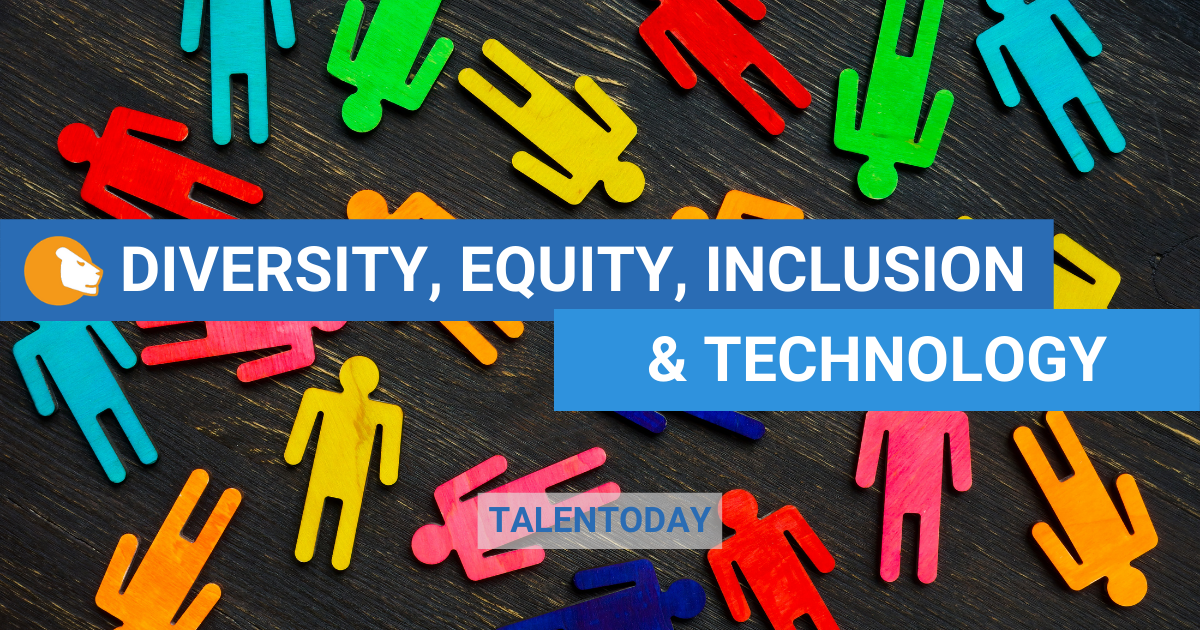
Workplace managers and teams are prioritizing Diversity, Equity and Inclusion (DEI) more now than ever before, and for good reason. DEI helps improve the presence of people of different races, genders, religions, sexual orientations, etc. (diversity); the fair and respectful treatment of all people (equity); and the extent to which all individuals feel respected, accepted and valued (inclusion). DEI also delivers a multitude of benefits that come from having a diverse population in your organization, including: profitability and value creation, innovation, and better decision making.
While business leaders have committed to diversifying their workforce, HR professionals and recruiters are still tasked with hiring the right people. Thankfully, science and technology can help organizations make the right hiring decisions while supporting DEI goals. Digital solutions and tools can help with everything from removing implicit bias from the selection process to predicting how someone will contribute to a team, and understanding how they will behave in a professional setting.
Opportunities and pitfalls associated with diverse hiring efforts
Research shows that bias is present in the hiring process and can start before a candidate walks in the door. For example, certain verbiage can attract more men than women, and people with white sounding names receive more callbacks on average than those with stereotypically black-sounding names. Implementing tools, such as a behavioral assessment, in your selection process can help you to proactively remove implicit biases. You can see a person for their strengths and not lean towards someone who is similar to you.
A common term that is used in the selection process is “culture fit.” However, when maintaining organizational culture becomes the sole focus of this process, it can have the unintentional consequence of hiring different versions of the same person. Allow your core purpose and values to guide you, while being cautious of how you equate those to your “culture” and how you assess a candidate’s ability to uphold your purpose and values. By making room for diversity to be a part of your culture, you will be empowered to celebrate and appreciate the value that each person is adding to your organization.
Diversity beyond what the eye can see
Before blindly jumping into diverse recruiting initiatives, decide what diversity means for your organization. Is it women in leadership? Recruiting and hiring people of color? Creating a comfortable environment that supports various stages of life? All of the above?
Think of the product or service that you’re selling. Can you confidently say that your team is reflective of the people you serve? Having people who can relate to your customer base is vital to the success of your organization. In fact, a team member who shares a client’s ethnicity is 152% more likely to understand the client. In this case, the diversity that we are striving for is easy to identify, and sometimes it goes beyond what we are able to outwardly see.
Understanding the importance of diversity of thought is an important step for your team to reach their highest potential. When team members are able to bring in different perspectives, it helps to create a culture of challenging the norms to allow for new and creative ideas and solutions. These various perspectives are the result of distinct life experiences or work backgrounds and can guide your team to greater successes.
How to leverage science and technology within your DEI efforts
As with any strategic change, diversity within an organization doesn’t happen overnight. It will take months of ongoing planning and years of commitment to become a part of the fabric of your organization. Luckily, there are things you can do immediately to promote equity and inclusion .
Create a culture of openness. Allow for ideas to be heard and create a safe environment for people to propose ideas. Give power to all members of your team to make decisions, and provide actionable feedback to their ideas rather than criticism.
Assess your team to see what areas you are lacking in. Confront skill gaps and then solicit teammates with diverse opinions to help you make business decisions and aid in brainstorming solutions.
Leveraging science and technology is a great way to ensure you are taking implicit biases out of the equation and being efficient in your efforts. Tools such as the MyPrint Collaboration Report are helpful for understanding how differences between two people can be beneficial, and visualizing group data through the Group DNA feature can help to find where your gaps are in your team.
Although change doesn’t happen overnight, there is nothing stopping you from starting the momentum today. Start by fostering inclusion on your team today by telling someone how their work matters. Then, take our complementary MyPrint assessment to start understanding how science and technology can support your goals!
Looking for additional resources and support? Email Talentoday at customer@talentoday.com to learn more about our assessment and services!
Better Assess Your Workforce Using Group DNA
Every living organism is made up of a unique genetic code of DNA. Although the same organic components are used the outcomes can be vastly different from one another. The same thing goes with teams. Think of your work team as a strand of DNA. Some team members might share certain common traits with one another, and those become a prominent part of your overall team behavior. Similarly, having variety in your strengths can also increase team synergy. Losing parts of your team, rearranging responsibilities, or adding more members to your group can all impact the outcomes, and being able to effectively measure and assess your workforce enables you to understand and guide your team to reach their full potential.
Assessing for hiring
There are multiple things to consider when assessing a new hire for your team. Having a thorough understanding of their background and skills, for example, are important for making sure that the individual has the ability to do the job. These things can be assessed using various methods such as Structured Interviews, reference checks, and based on education or previous experience.
Another important aspect to consider when hiring for your team are the soft skills that an individual possesses. Finding the strengths that they will bring to your team and seeing how they will fit in with your team’s current soft skill DNA are important to maximize each person’s potential and help your team to stay engaged and successful in their work.
When assessing individuals’ soft skills be sure to use a valid and reliable tool rather than going off a gut feeling. The MyPrint® is a scientifically backed tool that is both valid and reliable for use in the workplace. The 155 item questionnaire provides detailed insight into an individual’s personality traits and motivations as well as their professional behaviors. This information can be used when hiring a candidate to see if their strengths fit in with what the role requires, as well as to get a better understanding of environmental or culture fit.
Assessing your current workforce
Assessing your current workforce helps to ensure that employees are receiving the proper guidance and support they need to do their jobs well. This can be done through performance reviews, measuring key metrics, or frequent 1:1 check ins with your employees.
In addition to goals and performance, understanding your team from a soft-skill point of view is beneficial for working as a group and engaging your employees. Once your entire team has been assessed using the MyPrint®, you can view their results via their individual reports, or by using the new Group DNA feature that is coming soon to the Talentoday Manager platform. Being able to see where your team as a whole falls in terms of their soft skills can help you to ensure that your team is using their strengths as well as figuring out where the gaps are that you need to fill. In addition, being able to see the common motivators among your team helps to come up with ways to motivate and engage your workforce from a global perspective which is helpful in certain situations where you can’t tailor the work environment for each individual.
First look at the Group DNA feature
Below is a sneak peak of what the Group DNA feature looks like! This example was made using 10 members from our very own Talentoday family. You can see that our team is made up of individuals who are Extroverted and Positive, which is always fun when we have team celebrations! We are also Confident, meaning we are self-assured in our abilities (rightfully so, we have very talented people on our team!) and we are Big Picture thinkers, always keeping those long-term solutions in mind as we continue to innovate and create new features.
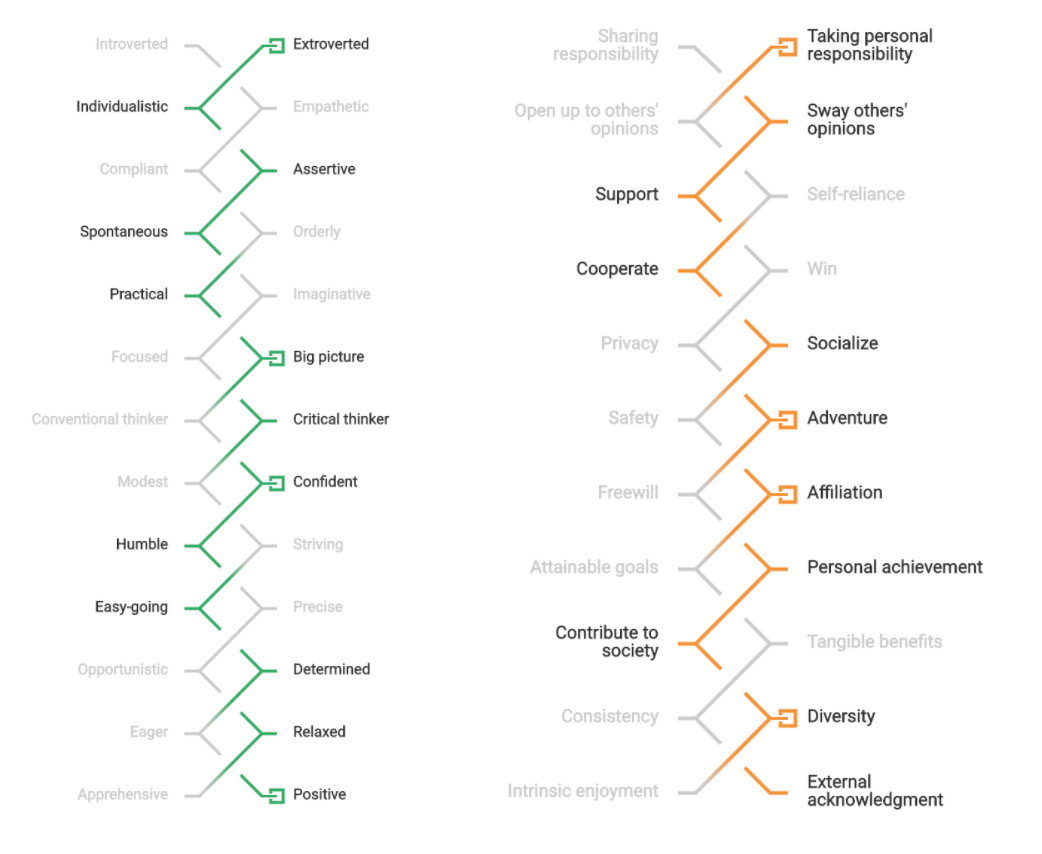
When it comes to motivating our team, the most important things are that we have Personal Responsibility for our work, but still have a Need for Affiliation and to share common interests with our peers. We also like to be kept on our toes with a Need for Adventure and Diversity — we like to spice things up around here!
Why this is important
The purpose of the Group DNA feature, and assessing your team’s soft skills, is to help visualize the data. The information provided is not necessarily indicative of work performance, but it can be used to understand the work culture of a population.
By understanding this data and keeping up to date with the DNA of your team, you can work to create an ideal work environment by setting relevant goals and rewards, as well as by solving conflicts the right way!
Are you interested in learning more about the upcoming Group DNA feature, or are you looking for additional resources and support? Email Talentoday at customer@talentoday.com to learn more about our assessment and services!
Build Your Team Using Soft Skills
In the pandemic-impacted spring of 2020, puzzle sales were up 300% from the year prior¹. I have to admit that I contributed more than my share to that increase in sales; you can only watch so much Netflix before you need to find a new in-home activity!
What I’m trying to say is that I spent a lot of time in front of puzzles this year and I’ve learned one valuable lesson: teams are a lot like puzzles. That is our metaphor for today.
We don’t always know what our missing pieces will look like
When you are looking for the perfect piece for your puzzle you might have the exact picture of what you are looking for in your head. You know what the surrounding pieces look like (what their strengths are) and you just need to find the piece that looks like those ones. The problem with putting too many constraints on what we want is that oftentimes as human beings we’re wrong. Although there might be certain characteristics that we know we need for a position, that doesn’t mean that we know all of the important aspects.
When interviewing candidates, it might seem like we know exactly what soft skills are needed for success. After all, why wouldn’t you just find someone who looks just like your top performers? To start, there are a lot of positions where two opposing traits can come in handy! Someone who is extroverted can be just as successful in a position as someone who is introverted. Same goes for people who are patient versus being eager, or imaginative versus practical. That brings us to our next point — similarities and differences.
Some pieces look similar, but the differences in pieces are what create the whole picture
When every person on your team thinks exactly the same way, you lose something very important in teamwork: Diversity of Thought². When hearing this term you might automatically think of gender, race, background, or age. While all of these things are important, another aspect of diversity can come in when looking at — that’s right — soft skills.
When teams are collaborating on a project there are aspects of their personality or motivations that can be helpful to have similarities in. However, if you have a team full of extroverted people, you might find it hard to get on track. If your team is full of big picture thinkers, you might find yourself with a lot of ideas and not a lot of action items. If everyone on the team is very precise, you might end up spending more time on the details than necessary. Find the gaps in your team and keep that in mind when you are looking for new people to join your organization.
Each piece is unique and has a place, even if it’s not where you originally thought
Let’s say you hire an individual who you thought was the perfect fit for a team and they’re not doing quite as well as you thought. Before giving up on that person take some time to get to know their soft skills. What are their personality strengths? Are you utilizing these strengths in their position? Do these strengths have a place in their current position in the team? What motivates this person? Are you fulfilling those motivations as a manager or teammate, or is their work fulfilling those motivations?
See if there is another place where that individual can thrive, even if there are some skill gaps to address. People are the most important asset to an organization³ so before getting rid of a good hire, see if they were just in the wrong position.
Once your pieces are where they belong, you can create something amazing!
Every person is unique. Even when there are shared qualities within a team nobody thinks, is motivated, or behaves in the exact same way. Those differences are what make a team stronger, more creative, and ready to tackle whatever challenges they might face!
Using MyPrint® to put together your team
For more ways to understand your team’s soft skills on an individual and group level, check out our MyPrint® assessment and keep reading to learn more about some of our features included in the Talentoday Manager platform!
One Pager: Use this one page summary of an individual’s results to see their top 3 personality strengths, top 3 motivators, and 3 most prominent professional behaviors.
Premium Report: This 20+ page report gives in depth information about every personality and motivation dimension that is measured in the MyPrint® assessment, including strengths and tips to working with that individual. Additional information about the 11 professional behaviors are included, along with suggested interview questions to help you go more in depth when getting to know someone!
Collaboration Report: View two individuals’ most similar and different personality traits, as well as top motivators and behavior synergies in a side-by-side comparison.
Target Profiles: Use pre-made templates or create your own target profile to see where your team has similarities. From there you can determine if these traits are beneficial to the position, or use this tool to determine the soft skill gaps in your team!
Stay tuned for some new, exciting features in 2021! Get more insights on your team as a whole on all personality and motivation dimensions, as well as understanding how individuals’ behaviors synergize with one another.
Looking for additional resources and support? Email Talentoday at customer@talentoday.com to learn more about our assessment and services!
Sources
²https://www.businessinsider.com/the-future-of-workplace-diversity-is-here-2013-9
Let’s Get Social!
Take a minute to think of as many social media platforms as you can. How many of those do you have an account with? How many do you visit on a daily or weekly basis? What type of interactions do you hope for when you log on, and are they different from what you experience?
Social media is pretty wild when you think about it. My grandma grew up during the Great Depression and now she has four Facebook accounts. Not because she has capped out on the friend limit for each one, but because she has forgotten her password that many times.
We can connect with our childhood friends that we haven’t seen in decades, catch up on world news and events, see all the cute dog videos and join groups of people who share our interests, all with just a few clicks! There are obviously unavoidable negative aspects to social media as well, but my positive personality is going to focus on how we can add some sunshine to our timelines!
Our social media campaign
We want to get connected with YOU! Our Talentoday family spans the entire globe. To feel more connected as a global community, we like to showcase our unique traits by inviting our members to share their MyPrint radars to their social media networks. You’ll see us doing this periodically throughout the year because, let’s face it — we can’t get enough of you!
How to get started
First order of business is to take a MyPrint assessment (if you haven’t done that yet, you can do so here). This takes an average of about 25 to 35 minutes to complete, and it’s best to try to take it with minimal distractions around. You can learn more about MyPrint and the science behind the assessment in this blog post!
Immediately after you complete the questionnaire, you will see your results in your profile. Take some time to check those out, learn more about your strengths and what makes you unique! In your profile you will be able to view your personality radar, motivations and behaviors, as well as download your free One Pager report to view your top three traits for each section!
YAWP!
As the late, great Robin Williams says as he plays Mr. Keating in Dead Poets Society, we all have something inside of us that is worth a great deal.
“I sound my barbaric yawp over the rooftops of the world”
-Walt Whitman, Song of Myself
We all have unique traits that make us who we are and those should be celebrated and proudly proclaimed to the world! So to sound those MyPrint yawps over the metaphorical rooftops of the world, we have put in buttons so you can easily share what makes you special to your social media networks! When you share your radar, include our hashtags so that we can connect as a global community.
Let’s work together to add some sunshine to our timelines and show the world what makes us unique!
Looking for additional resources and support? Email Talentoday at customer@talentoday.com to learn more about our assessment and services!
Closing the Skill Gap & Optimizing Your Workforce
We can all agree that the only constant is change, right? For example, look at your life 6 months ago and compare it to now. Pretty different, isn’t it? Okay, maybe that’s not a fair example because of the whole “global pandemic thing”; but pandemic aside, things are constantly evolving in all aspects of our lives. Your phone software is continuously being updated even if you have the same phone. Fast food restaurants are using touch screens to place orders. Every new model of car has a button that does something our cars didn’t do before. We wear masks to go to the grocery store and we are all finally getting the personal space we desire (let’s be honest, we can’t really push the whole pandemic thing aside).
It might seem like technology is taking over the world, but remember that behind every new technology are the humans that created it. We shouldn’t be competing with technology but rather learning how to coexist with it. Using technology to improve our processes and harnessing our human power in more efficient and effective ways is how we will beat the robots! (…and stay ahead of the skill gaps!)
Internal Mobility
Before we get too far into this blog post, I want to make sure we’re all on the same page about Internal Mobility. This is when an organization is recruiting for positions within their current workforce¹. For example, if there is a need for a new position within an organization or if someone leaves their role then the candidate pool would come from individuals already working at that organization. There are so many benefits to Internal Mobility, both economical and cultural. I suggest you check out the webinar recording for that!
“But what if the new role requires skills that nobody else in the organization possesses?”
That’s what our blog post is really about today: closing those skill gaps!
Upskilling and Reskilling
Upskilling is used when you are taking the skills that a person already has and improving on those skills². A great example of this is technology. Although someone might be proficient in Microsoft Excel, for example, they could go through courses that help them utilize more tools and functions in Excel that they did not know about before. When upskilling an individual within an organization, the goal is to keep them in their same position while improving their performance and adapting to changes within their environment.
Reskilling on the other hand deals with teaching an individual completely new skills². These can be hard or soft skills, and the goal is to provide an employee with the tools needed to move into a brand new position.
How do soft skills play a role in this?
As you know we are all about soft skills here at Talentoday! If you thought we were going to have a blog post that didn’t mention soft skills then you, my friend, were very wrong. Did you know that 94% of employers consider soft skills to be a key element of success in the workplace?³. This isn’t to say that hard skills are not important — just that we’re going to focus on our soft skills today.
Think about your current position. What was it that got you that role? It might be your education, your knowledge of a specific technology or product, or maybe your prior years of experience. Now think about what makes you successful in your role. These are probably going to be your soft skills: your ability to communicate, think critically, pay attention to details, or make decisions. This is why soft skills are so important; they play a huge role in one’s success in the workplace, and they sometimes go unnoticed!
Target Profiles
Assessing your workforce is the best way to keep up to date with the skills that you currently possess and also the skills that you need growth in. Our MyPrint assessment and Talentoday Manager platform are a great way to assess and visualize your workforce’s soft skills.
Within the Talentoday Manager platform we have a Target Profile feature to help visualize the 8 most distinct personality and motivation traits for a group of individuals. This can be a custom group of people or based around a single job title or function. Below is what the Target Profile for Sales looks like, which is one of the Target Profiles that is built into the Talentoday platform.
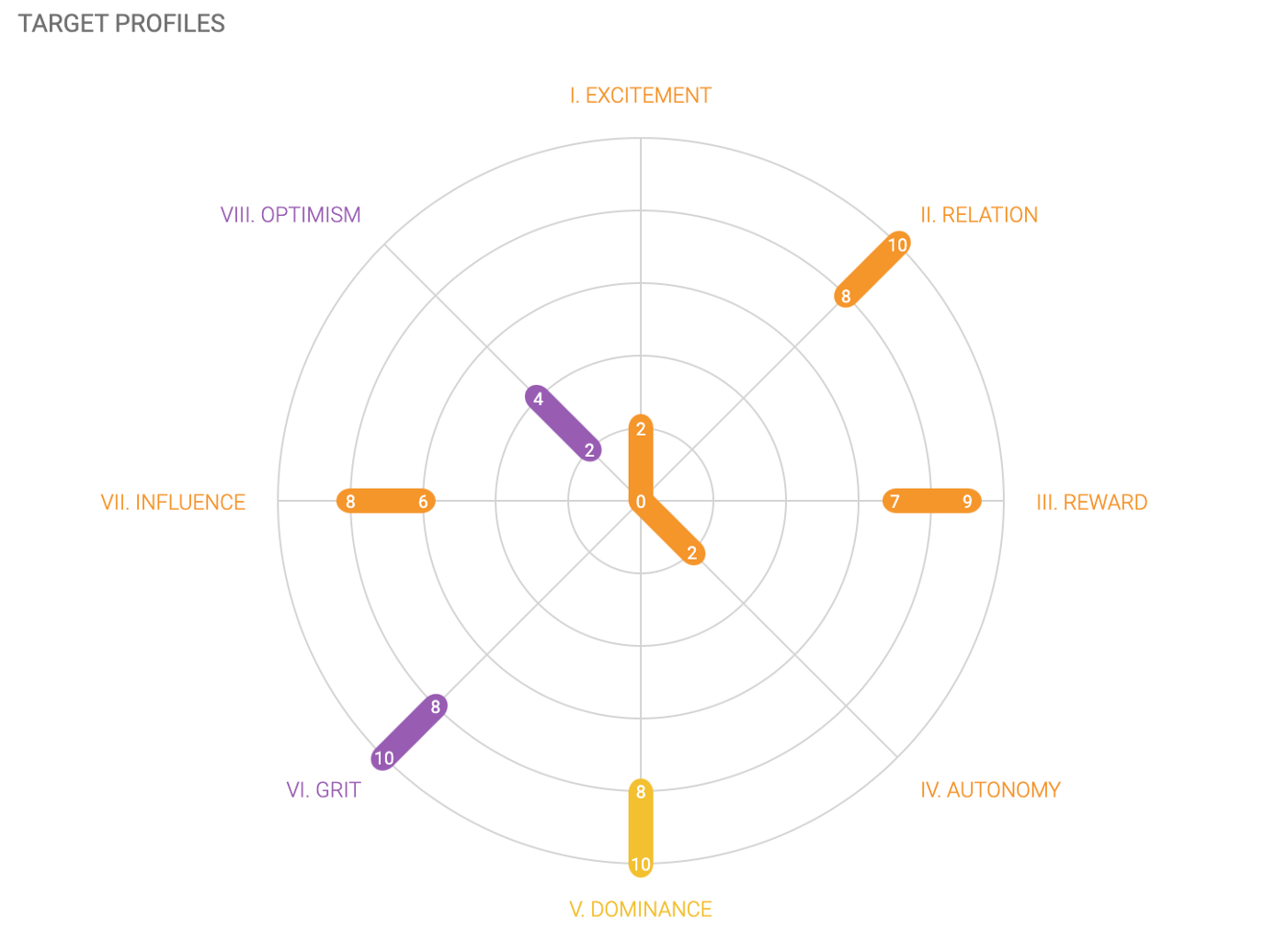
Now let’s put this to use — let’s say that I wanted to move into a Sales role. We could then match up my MyPrint results on top of the Target Profile for Sales to see the areas where I have the biggest gaps.
Right away we can see that I am a 47% match for a Sales profile. Does this mean that you should lose all hope in my ability to be a sales person? Not at all! This Target Profile should be screaming opportunity at you! One area of concern would be that I am very high on Optimism (shocker, I know). Knowing this, I would probably need some training on when, where, and how to use my positivity. I wouldn’t make any sales if I responded to clients’ concerns with “It’s fine, everyone experiences bumps in the road! You are still profiting though so you are doing great!” (Sorry to all of the sales people out there who just panicked a little bit).
When an employee is moving into a new role it is key to understand what skills they possess, as well as the talent gaps they need to fill, in order to set them up for success. Just because someone isn’t a 100% match for a new position does not mean that they are a lost cause. People are capable of learning and growing not only with their hard skills, but with soft skills as well!
In conclusion…
Technology is taking over the world. Okay, maybe not completely. Technology is constantly changing though, and with that comes a change in our workforce. By understanding the skills that your workforce currently possesses you can stay on top of the skill gaps that are sure to come your way. By investing in your people, you will be able to optimize your workforce to be the most successful that they can be!
If you’d like to view our webinar on Upskilling and Optimizing Your Workforce, or if you’d like more information about Talentoday, please visit www.talentoday.com or contact our experts at contact@talentoday.com.
Sources
1 Whelan, P. (2019). Why internal mobility is key to building the workforce of the future. HR Technologist. https://www.hrtechnologist.com/articles/recruitment-onboarding/why-internal-mobility-is-key-to-building-the-workforce-of-the-future/
2Agrawal, S., Poplawski, P., Reich, A., & De Smet, A. (2020). Beyond hiring: How companies are reskilling to address talent gaps. McKinsey & Company. https://www.mckinsey.com/business-functions/organization/our-insights/beyond-hiring-how-companies-are-reskilling-to-address-talent-gaps
3Chelovechkov, A., Lefkowitz, R., Spar, B., & Van Nuys, A (2019). 2019 Workplace Learning Report. LinkedIn Learning.
Preventing Employee Burnout
When was the last time you were recognized for your hard work, whether it was from supporting another team, leading a meeting, doing a presentation, or even just getting through a large workload? Chances are this is something common to receive praise for, both from your colleagues as well as your friends or family. Now think of the last time that you received similar praise for taking a bubble bath, meditating, or going for a walk. You most likely haven’t received as much as a pat on the back for partaking in any of these activities.
Obviously those are two completely different and unrelated things, right? Well, kind of. However if you are receiving praise for doing something, you are likely to continue doing that thing, right? So if we are constantly being praised for working hard, but rarely for self-care, then what happens? That, my friends, is the topic of the day: Burnout.
What is burnout?
So what is burnout anyways? Essentially, burnout is overworking yourself to the point of physical, mental or emotional distress². Everyone has a different threshold for how much they can work before experiencing burnout, but a huge factor in this is how you feel about the work you are doing. When you are satisfied with your work — when you are engaged and motivated — you are less susceptible to the stressors that can bring not only mental or emotional, but also physical distress to your body³.
What causes burnout?
There are multiple factors that can lead to employee burnout, but one of the main things is the lack of satisfaction that one has with their work¹. Some people are lucky enough to have found work that brings them great joy, and even these individuals are able to experience burnout.
When work stressors build up over time, they will eventually boil over and lead to burnout. This can result from having an unclear idea of what you are supposed to be doing in your role, taking on too many responsibilities, lack of recognition, working long hours, or not carving out time to take care of yourself. These are just a few of the factors that can lead to employee burnout, especially if no preventative measures are being taken.
Why is this something I should be concerned about?
As we have mentioned before, burnout can have an impact on your mental, emotional, and physical wellbeing³. Mentally, burnout can make it hard for someone to focus, and they will often be distracted and have difficulties getting their thoughts together. Emotionally, it can lead to irritability and detachment from others. Physically, burnout can lead to multiple issues such as headaches, sleep disorders, and even cardiovascular disease.
Preventing burnout
The first step to preventing burnout, is learning more about yourself and your employees. Understand what it is that motivates you and your team, and make sure that those motivations are being fulfilled. Research shows that individuals who are motivated and engaged in their work are less likely to experience burnout¹.
Rather than guessing based on gut feelings, or trying to motivate an entire workforce in the same way, you can assess your team to discover the unique ways to motivate and engage them. Leveraging tools such as MyPrint® can help you assess your team and help you motivate and engage your workforce in a more effective manner. Click here to read our blog post from earlier this year on step by step instructions on how to engage your remote workforce using MyPrint®, and see the chart below for more ways to motivate your team!
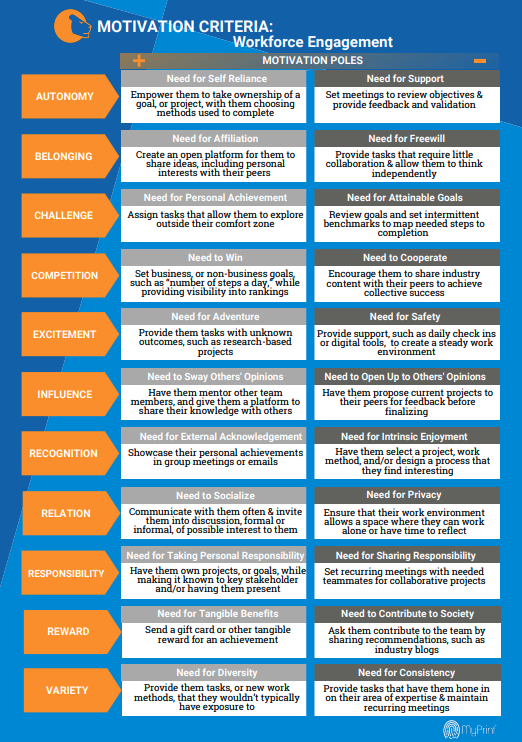
Even if you are the most motivated, satisfied, engaged individual, that’s still not enough to fully prevent potential burnout. Finding work-life balance is just as important! Here are some tips to set you up for success:
- Set boundaries: Set a time to consistently end your work day, and try to stick to it as much as you can. Restrict checking emails in the evenings, or turn off the alerts so you are less tempted.
- Time blocking: Set aside time on your calendar to ensure you get your work done if you find yourself constantly in meetings. Schedule short breaks if you are not someone who naturally takes breaks throughout the day.
- Have a designated work space: If you are working remotely, or often find yourself working at home, have a designated space for work (if possible) that is separate from where you like to relax and spend your personal time.
- Take breaks: Take time during the day for a mental break. This can include taking a coffee break, going for a walk, closing your eyes for a minute, or doing anything that is not work related.
- Find what makes you happy outside of work: Find a hobby that brings you happiness, spend time with your loved ones, get exercise or spend time in nature — find something that will increase your life satisfaction outside of work.
To sum it up…
If you have been feeling a little overworked or stressed out, use this as your sign to take care of yourself! Take a break. Meditate. Go for a walk. Take a minute to stretch or do yoga. Read a book. Cook a nice meal. Learn a new instrument. Do something for yourself to help find that perfect balance between work and play!
If you’re interested in using MyPrint® to motivate and engage your workforce, please visit www.talentoday.com or contact our experts at contact@talentoday.com
Sources
¹ Duffy, Dik, Douglass, England, & Velez (2018). Work as a calling: A theoretical model. Journal of Counseling Psychology, 65(4), 423–439.
² Maslach, C. (2003). Job Burnout: New Directions in Research and Intervention. Current Directions in Psychological Science, 12(5), 189–192.
³ Smith Bailey, D. (2006). Burnout harms workers’ physical health through many pathways. Monitor on Psychology, 12(5), 11.
Employee Friendships in 2020
If you’re like me, you’re probably missing your work friends right now. Even if you’re not like me there’s still a pretty high chance of that! Millions of people around the world have been working from home amidst the COVID-19 pandemic, and working in pajamas has become the new normal… okay, maybe not everyone is in pajamas.
Even though we might not be seeing our work pals it is important to find ways to stay connected. A study by Gallup¹ found that workplace friendships are one of the strongest predictors of productivity. In addition, those who have strong work relationships are more engaged, produce higher-quality work, and have an overall higher state of well-being. That same study found that in order to have a thriving day we need at least six hours of social time. Sound impossible? It’s not as difficult as you might think.
The ‘New Normal’
With the ‘new normal’ in the workplace including remote work, social distancing procedures, alternating schedules, and other obstacles that make our social interactions more difficult to achieve, we need to be more intentional about our workplace friendships. These challenges are something that every company is learning to navigate, and it does not have to come at the expense of employee relationships and well-being.
A study done in New Zealand after a series of earthquakes forced many people to move into remote working found that the biggest area of concern to employees was the social cost². This included professional and personal isolation, limited team interaction, loss of visibility and development, and lack of face-to-face communication. Thankfully we live in an age where technology can be our friend and counteract a lot of these concerns!
Zoom, Zoom, Zoom!
Raise your hand if you have used Zoom in the past month. There have been between 200–300 million daily meeting participants on Zoom during the beginning months of COVID-19³. Birthday parties, happy hours, book clubs, classes, and business meetings are just a few of the many social gatherings that have turned virtual in 2020. Leveraging video conferencing can help bring employees together as well!
Do you normally eat lunch with your coworkers every day? Maybe pick one day each week to have a ‘virtual lunch’ with those that you’d normally (or not normally) eat with. Even a quick instant message to your work buddies to ask a question, or simply share what you’ve been binge watching on Netflix, can help add to that six hours of social time needed for a thriving day!
Working in a virtual environment also gives employees the opportunity to reach out to those that they would not normally have the opportunity to work with. Whether it is collaborating on a project with individuals in other offices or departments, or simply reaching out to colleagues to get to know them better, the virtual workplace gives everyone a chance to create new connections that aren’t determined by physical proximity.
MyPrint® for the Virtual Age
With virtual and remote teams being the new normal, it might take a little more creativity to bring your team together! Some fun events that we at Talentoday have done to stay connected are virtual happy hours, knowledge sharing sessions from different departments, and a MyPrint® ‘Guess Who’ game!
As new teammates are being onboarded into a virtual workplace, it can be difficult to get to know each other in the same way you would when meeting face-to-face. You can help to jumpstart these new workplace connections by leveraging a lot of the tools that the MyPrint® assessment provides! Sharing your dominant personality traits, learning how to motivate one another, or reading through your Collaboration Report together can help alleviate some of the pains that come with a virtual working relationship.
No matter what your new normal looks like, whether it is back in the office or in your pajamas at home, MyPrint® can help you and your team to continue to adapt and grow together!
Looking for additional resources and support? Email Talentoday at customer@talentoday.com to learn more about activities like the MyPrint ‘Guess Who’ game and other services!
References
¹ Rath, T. & Harter, J. (2010). Your friends and your social well-being.
Business Journal.
https://news.gallup.com/businessjournal/127043/friends-social-wellbeing.aspx
² Donnelly, N. & Proctor-Thomson, S. B. (2015). Disrupted work: Home-based teleworking (HbTW) in the aftermath of a natural disaster. New Technology, Work and Employment, 30(1), 47–61. https://doi.org/10.1111/ntwe.12040
³ Iqbal, Mansoor (2020). “Zoom Revenue and Usage Statistics (2020).” Business of Apps, www.businessofapps.com/data/zoom-statistics/.
Use MyPrint® to Engage Your Remote Workforce
In the early months of 2020, HR professionals and managers have been faced with the biggest unilateral shakeup that doesn’t discriminate against industry or country borders, the COVID19 global pandemic. Workplaces with previously strict or conservative remote work policies may find themselves in a non-negotiable situation as “social distancing” is the new norm; that of course, is if you’re lucky enough to work in an industry or position that allows you the ability to work from home. While some may find themselves out of work, others are on the frontline of the pandemic, such as medical staff and grocery store workers. For managers creating an office at home, it poses the question: how do I be present and engage my team virtually?
At Talentoday, we have a passion for unlocking the keys to employee engagement, management and teamwork, which is the driving force behind our MyPrint® assessment. Through our assessment, coupled with our web application, we offer digital solutions to managers for effectively engaging their team. While our assessment wasn’t originally designed to provide instructions for remote team management through soft skills, we’ve been able to identify the direct correlation between results and how to put this knowledge to use in a remote work setting. The below is a step-by-step guide, with advice, on how to leverage assessment results for your remote team.
Step 1: Have your team spend 20–30 minutes completing the MyPrint® assessment.
Immediately after completing the assessment, they’ll have access to their personality radar, motivations and professional behaviors. While some of your team may additionally be experiencing a period of self-isolation, or having limited social exposure, this allows for dedicated time for a bit of self-care and self-reflection, by allowing them to take a deep look into their strengths (or potentially some areas they could seek additional training during this remote period).
Step 2: Look at the unique motivations across your team and figure out what motivates, and discourages, your team.
Working from home, coupled with isolation, some may experience a lag in productivity and engagement. As a manager, this allows you the opportunity to step in and rally for success. Within the motivation poles, managers are given tailored guidance based on individual results for what motivates an employee, as well as insight on what can discourage them. See below for an example:
Step 3: Start tailoring motivation to individual results and empower an engaged remote workforce.
After taking a look at your teams’ results, you’ll notice that there are 11 motivation categories, with two different criteria for each motivation. We refer to these criteria as either the “positive side,” at the high end of the pole, and the other as the “negative side,” with it being on the lowest end of the pole.
In the below graphic, you’ll see engagement examples that align to both the “positive” and “negative” sides of the poles to help tailor motivations to individuals on your team.
Long after the COVID19 pandemic is behind us, Talentoday will still continue to provide quality solutions that help professionals make empowered decisions through data analytics. To keep building on the momentum sparked through remote work engagement, our solution offers additional features and insights; whether it’s learning how to best collaborate with another individual or asking more meaningful interview questions tailored to their MyPrint® results, we look forward to continuing to serve our global community and provide purpose during this time of uncertainty.
Ready to take the MyPrint® assessment? Set aside 25 minutes, in a non-distracting space, and click “Take the free test” on Talentoday’s website (www.talentoday.com).
For more information on Talentoday and how to utilize our reports and features, reach out to us directly at customer@talentoday.com for both existing and prospective customers. For more information about our science and product, visit our company website.



